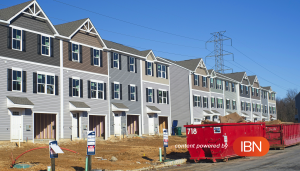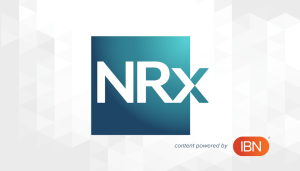
 For anyone who’s thinking about buying a home this year, keeping an eye on the trends impacting the wider community is wise since this can impact your financing options in unexpected ways.
For anyone who’s thinking about buying a home this year, keeping an eye on the trends impacting the wider community is wise since this can impact your financing options in unexpected ways.
In particular, a neighborhood that’s on the cusp of a growth spurt might boost your property value and influence mortgage choices. With these areas offering unique perks, understanding these dynamics is a must. So stick around and we’ll unpack what’s at play in this context.
Emerging Neighborhood Trends Impacting Financing
It’s no surprise to see that shifting neighborhood trends hold sway over home financing choices. And while this can work in your favor, you also need to recognize that moving into a hot spot today can mean higher costs or limited mortgage options tomorrow. As such, understanding these shifts is key.
Emerging trends include:
- Urban Revitalization: Cities that repurpose old spaces end up attracting new residents and altering demand for home loans in a given region. For instance, NYC’s latest waterfront redevelopment project is setting out to become a mixed use community hub, with an initial $80 million being spent ahead of future investments.
- Suburban Expansion: As cities get crowded, suburbs inevitably expand rapidly. This growth brings different lender perspectives on property values.
- Sustainable Developments: Green projects draw eco-conscious buyers but can have specific financing prerequisites.
Basically, an unavoidable reality of neighborhood popularity swings is that they alter housing supply and demand, directly affecting what lenders will offer. Areas in transition might witness rising prices or sudden availability of creative loans designed to entice new homeowners.
Moreover, economic fluctuations cause some areas to grow unpredictably which holds sway over market stability. Staying in the loop on community transformations is the best way to make savvy decisions when seeking financing solutions for your dream home purchase.
Innovative Mortgage Options for Growing Communities
New neighborhoods on the rise often spark inventive financing opportunities. When lenders spot potential, they’re more willing to get creative with mortgage products.
Here’s a top example:
- Hybrid Adjustable-Rate Mortgages (ARMs): These offer appealing initial rates, and so are well suited to areas which are expected to see a spike in property values over a short span of time.
In such communities, options like shared-equity mortgages and community land trusts are gaining traction. These involve partnerships between buyers and third parties to make ownership more attainable.
However, before diving into these options, you’ll need to understand APR and interest rate differences to compare effectively which choices are an appropriate fit for your financial situation.
Also, exploring lender incentives linked directly with urban renewal projects can unlock further benefits. Lenders might propose zero-down loans or flexible payment plans tailored for developing areas that attract savvy homebuyers ready to embrace evolving markets.
Staying informed about local real estate trends can be your ticket towards innovative yet sound investments within growing communities you’d like to join.
Challenges of Rapid Community Expansion on Loans
As we’ve touched on already, rapid growth in neighborhoods can present some headaches for potential homeowners seeking loans. Lenders may tighten their standards when an area’s market is unpredictable.
Issues include:
- Increased Competition: An influx of buyers can lead to bidding wars, which means needing higher pre-approvals.
- Appraisal Challenges: Areas where comparable home prices fluctuate widely due to fast-paced development make it tricky for lenders to value properties precisely. As a result they can reasonably be expected to require larger down payments or additional collateral from prospective buyers.
On top of this, developers sometimes struggle with infrastructure hold-ups, including for the likes of roads or utilities connections. This can affect perceived property value and the conditions of a loan tied to it. If public services aren’t keeping up with the expansion rate, it might deter both lenders and prospective buyers alike from entering that market confidently.
Strategies for First-Time Buyers in Dynamic Areas
For first-time homebuyers, settling into a growing neighborhood offers excitement and opportunity. But having an action plan is essential on the road to happiness and success.
To get a head start:
- Research Future Developments: Understanding what’s coming helps assess long-term property value and investment potential.
- Check the Small Print: Knowing local zoning laws or future city plans lets you foresee possible challenges or advantages when financing your purchase. These insights also help you weigh decisions like opting for a fixed-rate mortgage over riskier adjustable options.
Partnering with real estate agents specializing in emerging markets ensures access to insider information. They’ll be clued-up on changes before they happen and can therefore assist when you’re analyzing available properties that match your personal preferences.
Lastly, keep in mind that applying early means better odds against fierce competition from seasoned buyers who have likely seen these booms before. It can be a cutthroat market, so you need to arm yourself with whatever you can grab a hold of.
Final Thoughts
In short, you can certainly find fulfillment and financial stability if you are looking to buy a home in an up-and-coming community. It just requires proper preparation, a firm foundation of knowledge, and expert assistance at every turn.







